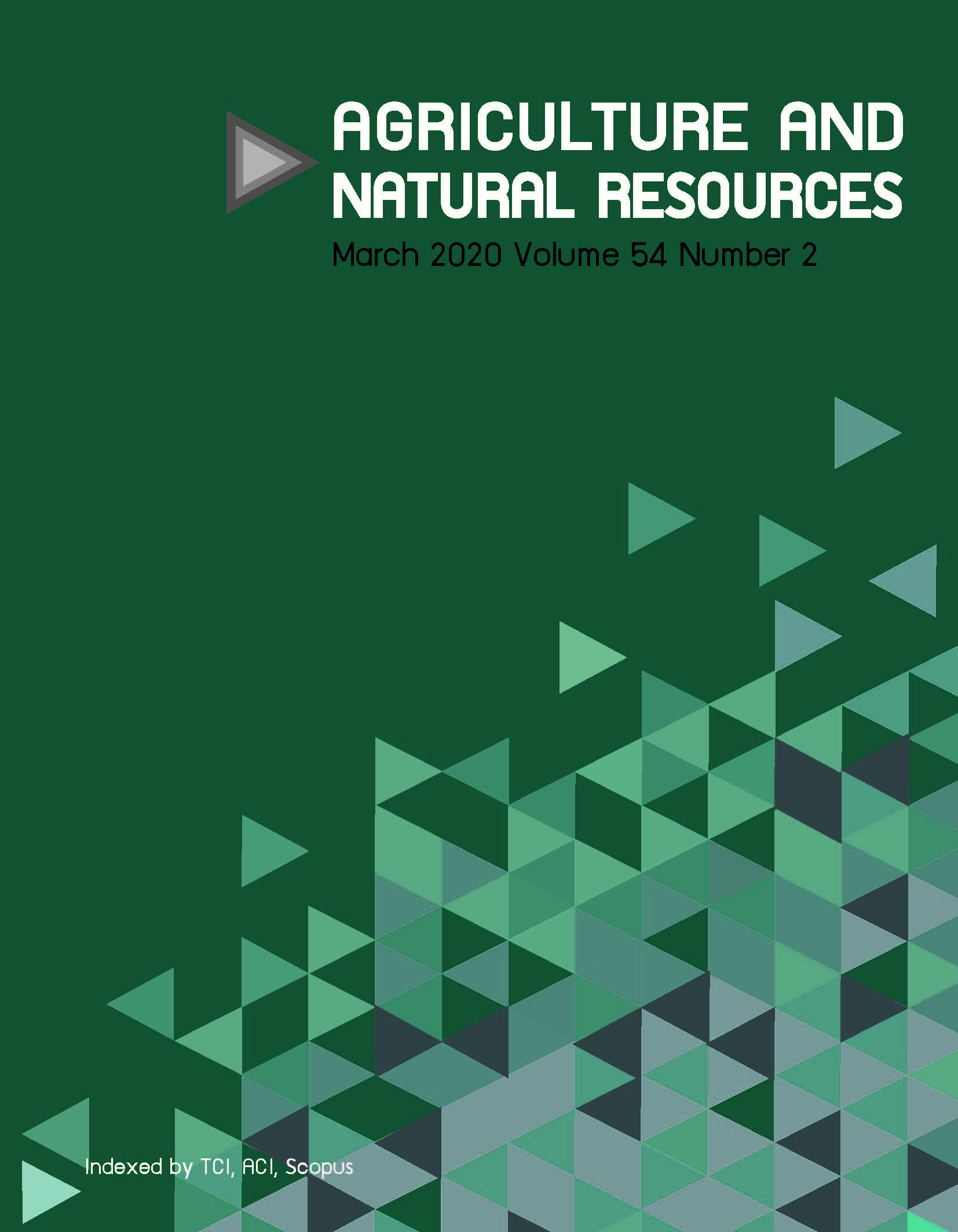Assessment of genetic diversity among Plumeria spp. using random amplified polymorphic DNA technique
Keywords:
DNA fingerprint, Genetic diversity, Molecular marker, Plumeria spp, Random amplified polymorphic DNA (RAPD) markerAbstract
Plumeria (Plumeria spp.) is considered as one of the most popular ornamental plants, with many varieties. Therefore, the purpose of this study was to evaluate the genetic diversity of plumeria using random amplified polymorphic DNA (RAPD) markers. Fifty plumeria samples were randomly collected from Dhonburi Rajabhat University, Bangkok, Thailand and the surrounding area. The DNA of these samples was analyzed using 20 RAPD markers. The results showed that only 47 samples could amplify and produce 351 DNA bands. The average percentage polymorphism was 99.58%, the average polymorphic information content was 0.33, the average resolving power was 8.52, the average effective multiplex ratio was 17.45 and the average marker index was 5.80. All these values were highly effective in discriminating among the 47 plumeria samples. Cluster analysis using the unweighted pair-group method with arithmetic average divided the 47 samples into four groups (A–D). Moreover, principle component analysis showed that group A could be separated into three subgroups. From cluster analysis, plumeria could not be divided based on the flower color, petal and leaf shape, while the samples could be separated using the leaf apex. The results showed a high level of genetic variation among these plumeria samples. RAPD markers could be powerful tools for the detection of genetic diversity among Plumeria species. The information obtained from this study can be applied to genetic conservation, taxonomic investigation and breeding programs for plumeria in the future.
Downloads
Published
How to Cite
Issue
Section
License
Copyright (c) 2020 Kasetsart University

This work is licensed under a Creative Commons Attribution-NonCommercial-NoDerivatives 4.0 International License.
online 2452-316X print 2468-1458/Copyright © 2022. This is an open access article under the CC BY-NC-ND license (http://creativecommons.org/licenses/by-nc-nd/4.0/),
production and hosting by Kasetsart University of Research and Development Institute on behalf of Kasetsart University.







